Related Research Articles

James White was a Northern Irish author of science fiction novellas, short stories and novels. He was born in Belfast and returned there after spending some early years in Canada. After a few years working in the clothing industry, he worked at Short Brothers Ltd., an aircraft company based in Belfast, from 1965 until taking early retirement in 1984 as a result of diabetes. White married Margaret Sarah Martin, another science fiction fan, in 1955 and the couple had three children. He died of a stroke.
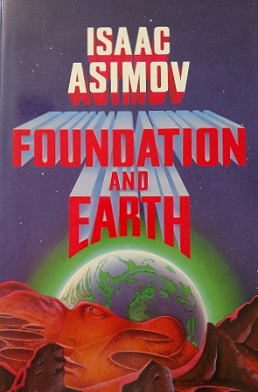
Foundation and Earth is a science fiction novel by American writer Isaac Asimov, the fifth novel of the Foundation series and chronologically the last in the series. It was published in 1986, four years after the first sequel to the Foundation trilogy, which is titled Foundation's Edge.

Alastair Preston Reynolds is a British science fiction author. He specialises in hard science fiction and space opera. He spent his early years in Cornwall, moved back to Wales before going to Newcastle University, where he studied physics and astronomy. Afterwards, he earned a PhD in astrophysics from the University of St Andrews. In 1991, he moved to Noordwijk in the Netherlands where he met his wife Josette. There, he worked for the European Space Research and Technology Centre until 2004 when he left to pursue writing full-time. He returned to Wales in 2008 and lives near Cardiff.

Alien invasion or space invasion is a common feature in science fiction stories and film, in which extraterrestrial lifeforms invade the Earth to exterminate and supplant human life, enslave it, harvest people for food, steal the planet's resources, or destroy the planet altogether. It can be considered as a science-fiction subgenre of the invasion literature, expanded by H. G. Wells's seminal alien invasion novel The War of the Worlds.

Gardner Raymond Dozois was an American science fiction author and editor. He was the founding editor of The Year's Best Science Fiction anthologies (1984–2018) and was editor of Asimov's Science Fiction magazine (1986–2004), garnering multiple Hugo and Locus Awards for those works almost every year. He also won the Nebula Award for Best Short Story twice. He was inducted to the Science Fiction Hall of Fame on June 25, 2011.
Damien Francis Broderick is an Australian science fiction and popular science writer and editor of some 74 books. His science fiction novel The Dreaming Dragons (1980) introduced the trope of the generation time machine, his The Judas Mandala (1982) contains the first appearance of the term "virtual reality" in science fiction, and his 1997 popular science book The Spike was the first to investigate the technological singularity in detail.

The Currents of Space is a science fiction novel by the American writer Isaac Asimov, published in 1952. It is the second of three books labeled the Galactic Empire series, but it was the last of the three to be written. Each occurs after humans have settled many worlds in the galaxy, after the second wave of colonization that went beyond the Spacer worlds, and before the era of decline that was the setting for the original Foundation series.
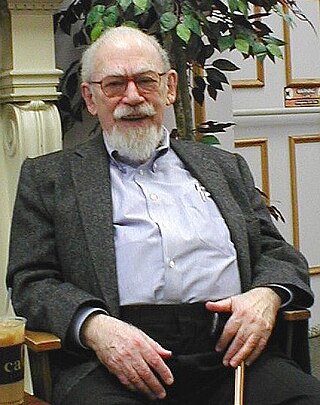
William Tenn was the pseudonym of Philip Klass, a British-born American science fiction author, notable for many stories with satirical elements.

Protector is a 1973 science fiction novel by American writer Larry Niven, set in his Known Space universe. It was nominated for the Hugo in 1974, and placed fourth in the annual Locus poll for that year.
"Venus and the Seven Sexes" is a science fiction story by American writer William Tenn. It was first published in the anthology The Girl with the Hungry Eyes, and Other Stories in 1949, and then in 1953 in the anthology Science-Fiction Carnival by Fredric Brown and Mack Reynolds.

First contact is a common science fiction theme about the first meeting between humans and extraterrestrial life, or of any sentient species' first encounter with another one, given they are from different planets or natural satellites. The theme allows writers to explore such topics such as xenophobia, transcendentalism, and basic linguistics by adapting the anthropological topic of first contact to extraterrestrial cultures.

NESFA Press is the publishing arm of the New England Science Fiction Association, Inc. The NESFA Press primarily produces three types of books:
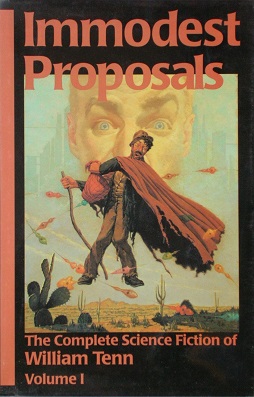
Immodest Proposals is a collection of 33 science fiction stories by British-American writer William Tenn, the first of two volumes presenting Tenn's complete body of science fiction writings. It features an introduction by Connie Willis. Tenn provides afterwords to each story, describing how they came to be written.
The Revelation Space series is a book series created by Alastair Reynolds that debuted with the novel Revelation Space in 2000. The fictional universe it is set in is used as the setting for a number of his novels and stories. Its fictional history follows the human species through various conflicts from the relatively near future to approximately 40,000 AD. It takes its name from Revelation Space (2000), which was the first published novel set in the universe.

Dying Earth is a subgenre of science fantasy or science fiction which takes place in the far future at either the end of life on Earth or the end of time, when the laws of the universe themselves fail. Themes of world-weariness, innocence, idealism, entropy, (permanent) exhaustion/depletion of many or all resources, and the hope of renewal dominate.
Of All Possible Worlds is a collection of science fiction stories by American writer William Tenn. It was published in hardcover by Ballantine Books in 1955, with a cover by Richard Powers. Ballantine issued paperback editions in 1955, 1960, and 1968; a British hardcover appeared in 1956 with a paperback following in 1963. It was Tenn's first collection.
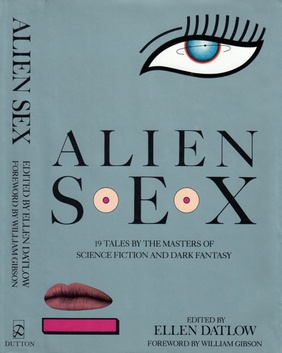
"And I Awoke and Found Me Here on the Cold Hill's Side" is a science fiction short story by American author James Tiptree, Jr. Originally published in The Magazine of Fantasy & Science Fiction, the short story has been republished in several anthologies.
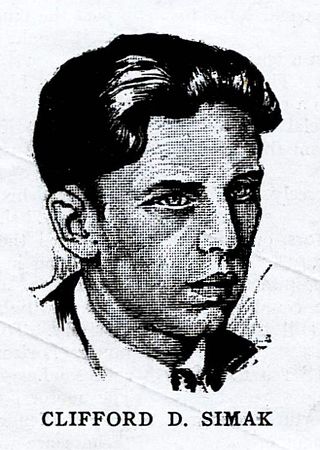
The American science fiction writer Clifford D. Simak was honored by fans with three Hugo Awards and by colleagues with one Nebula Award. The Science Fiction Writers of America made him its third SFWA Grand Master and the Horror Writers Association made him one of three inaugural winners of the Bram Stoker Award for Lifetime Achievement.

Carnival is a 2006 science fiction novel by Elizabeth Bear. It was nominated for a Philip K. Dick Award, a Locus Award and a Lambda Literary Award.

On Venus, Have We Got a Rabbi! is a 1974 science fiction novelette by William Tenn. At an Interstellar Neo-Zionist Congress convened on Venus, weirdly-looking aliens claim that they are Jews. This legal quagmire was ingeniously resolved by the Great Rabbi of Venus. The story satirizes the question "Who is a Jew?". It was first published in the anthology Wandering Stars: An Anthology of Jewish Fantasy and Science Fiction edited by Jack Dann.
References
- ↑ Tenn 2001, p. 186.
- ↑ Rodger Turner, Webmaster. "The SF Site Featured Review: Immodest Proposals". Sfsite.com. Retrieved 2010-07-08.
- ↑ "Locus Online: Rich Horton surveys the Best of 1953". Locusmag.com. 2004-02-20. Retrieved 2010-07-08.
- ↑ The Big Book of Science Fiction. Vintage Books. July 2016. p. 240. ISBN 978-1-101-91009-2.